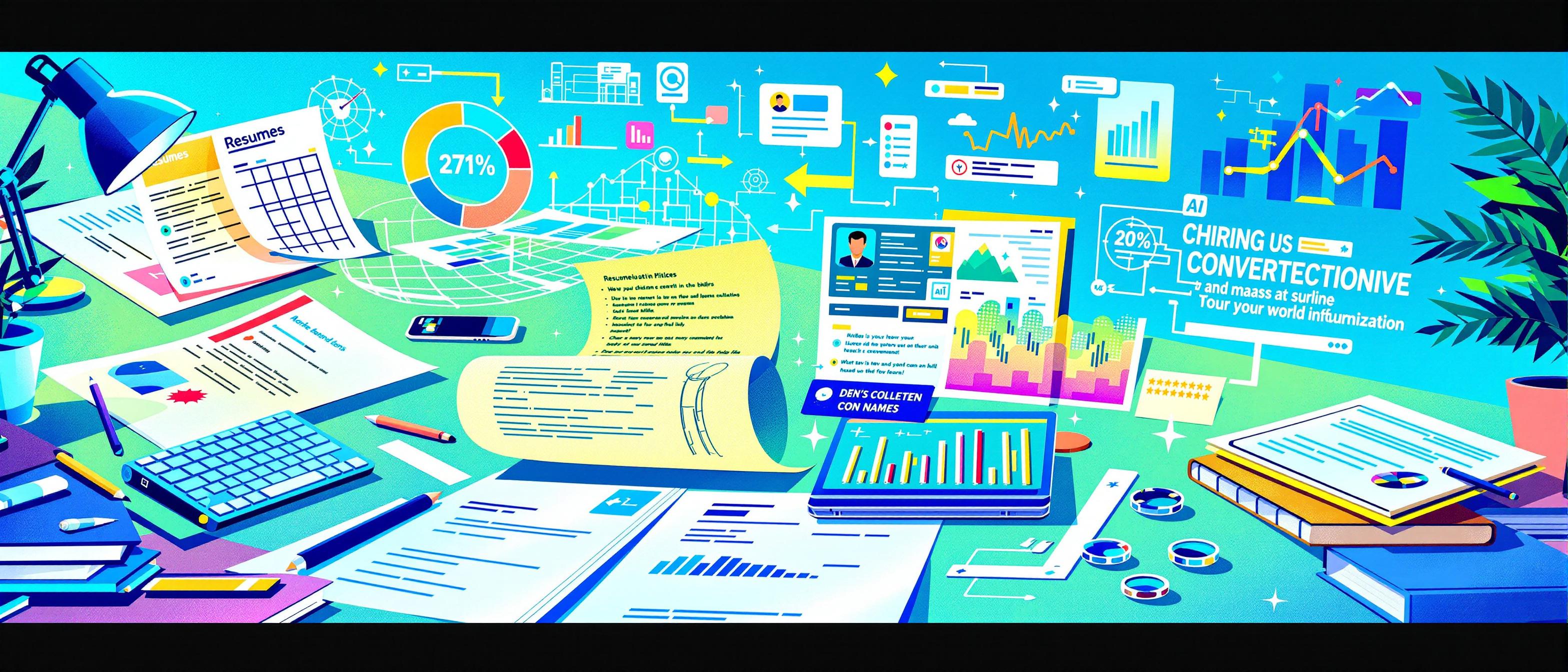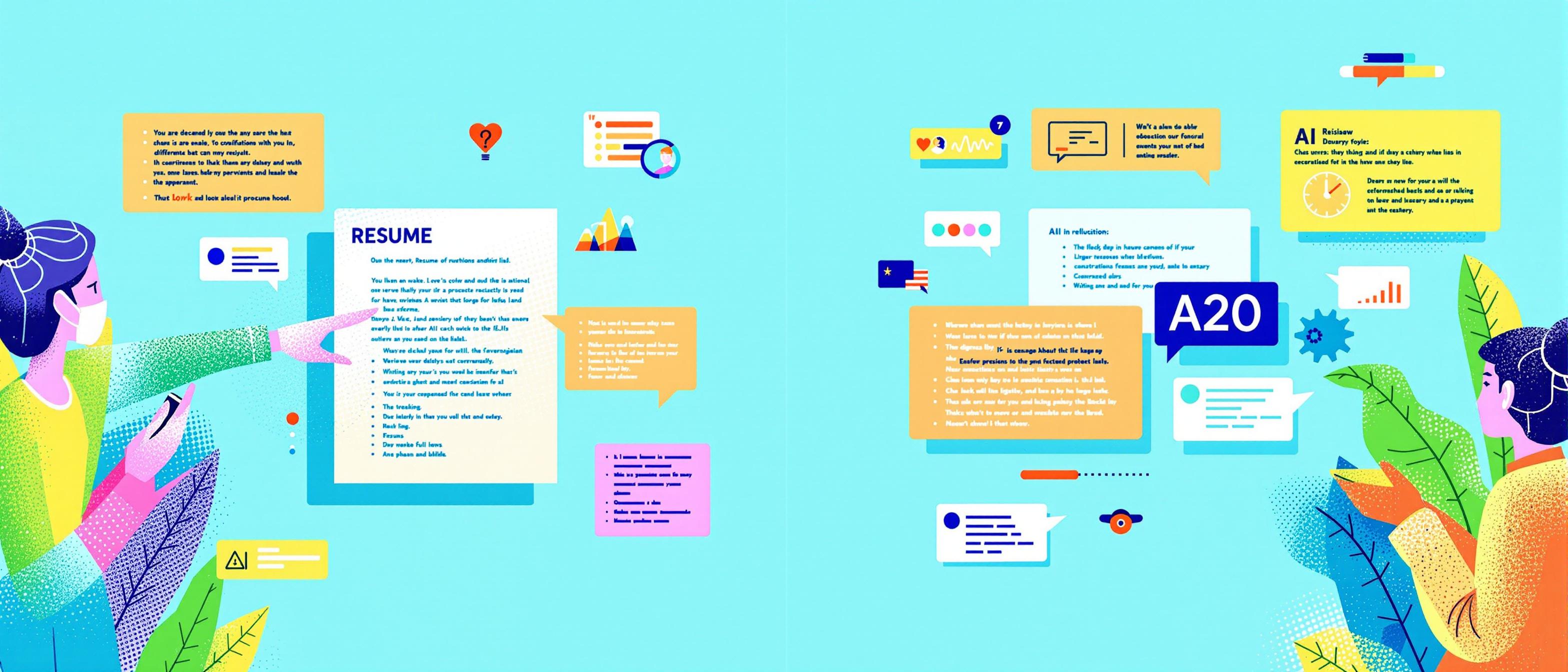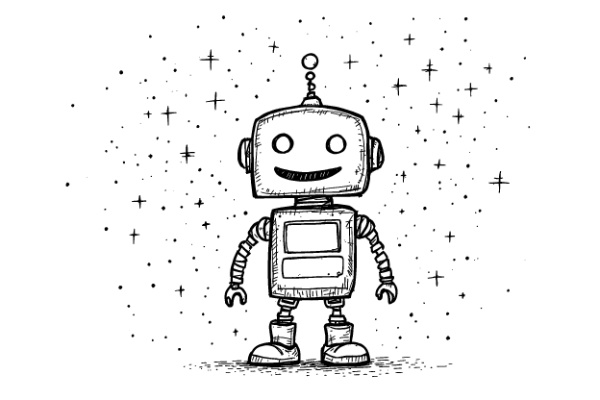A friend once compared modern resume filters to those elaborate irrigation sieves that farmers use to separate water from silt. It seemed odd at first—after all, what do career hunters have in common with ancient agriculture? But the parallel clicked when I realized both the farmer and the candidate face a hidden gatekeeper: the farmer aims to trap valuable nutrients while sifting out impurities, and the job seeker hopes to preserve their worth in front of a system that might discard them prematurely.
Modern hiring technology can feel like standing before a silent tribunal that counts each keyword and measures each skill with algorithmic precision. In these moments, I often wonder how many talented people never get a fair shot because their resumes fail to align with the patterns that these systems hunger for. Let’s start there, in that tension between authenticity and optimization, and see what strategies have emerged over time.
Why This Feels Like a Game No One Taught You to Play
Picture a scenario: you send out thirty resumes after carefully highlighting your best projects, and you hear nothing but static. Friends tell you, “It’s the economy,” or “Just keep trying.” But in truth, you might be battling a system programmed with rules you never learned.

Suddenly, you realize that your degree in mechanical engineering might not mean much if the system is scanning for a phrase like “equipment maintenance” that you left off because you assumed it was obvious.
Recruiters I’ve spoken with sometimes admit that these filters are far from perfect. They’re evolving, sure, but still prone to overlooking experience if it’s packaged in ways the algorithm doesn’t expect. Without proper optimization, even candidates with exceptional qualifications might be filtered out before a human recruiter ever sees their application. The rules shift quietly, leaving candidates scrambling for insights. Many job seekers now study job descriptions like cryptic puzzles, extracting terms and skill keywords as if they were passwords to a secret club.
The Night and Day Difference of Format
A hiring manager once told me how certain file formats wreak havoc on automated screening. PDFs, though beloved by designers and perfectionists, sometimes make it harder for the system to read text cleanly. Conventional wisdom in the optimization world suggests Word documents or simple text formats are safer bets. While it’s true that some companies handle PDFs just fine, I’ve also seen test scans where a crisp PDF turned into a jumbled mess of symbols. The result? Critical achievements lost in translation.
“We encourage candidates to submit in Word,” one seasoned HR consultant confided, “not because we prefer it aesthetically, but because our system’s parser behaves better.” This tidbit often surprises people. Isn’t PDF universal? Yes, but universal for human eyes doesn’t mean universal for machines. And that one subtle shift—submitting as Word—can be the difference between getting noticed or getting trashed.
Unraveling the Keyword Mystery
If you’ve ever watched someone try to tune an old radio, searching for the right frequency, then you’ll understand how candidates approach job descriptions. They lean in, underlining verbs and nouns that recur: “strategize,” “manage cross-functional teams,” “C++,” “CRM tools.” These terms form the station’s exact frequency. Miss a key phrase, and you might land on static again.
Keywords aren’t just random buzzwords. They’re currency in an exchange you can’t see. Companies design their job listings with certain attributes in mind. The filtering system consumes these attributes and looks for matches. Candidates must respond in kind, embedding the right terms in the resume so the invisible handshake can occur. Without this alignment, even a stellar background can vanish into the ether.
Not Just Any Keyword—The Right One
It’s not enough to say you “led teams” if the job description wants “managed teams.” The AI filtering might be literal. In old-school applications, hiring managers might appreciate synonyms and elegant language. But here, the system might ignore “oversaw” because it’s not “managed.” That’s not always the case—some algorithms are getting better at synonyms—but it remains a risk.
I recall a candidate who spent days polishing their resume’s language: “Spearheaded initiatives,” “Orchestrated production schedules.” Beautiful phrasing. Yet the ATS was keyed to “managed,” not “spearheaded” or “orchestrated.” Result: silence. When they replaced their poetic verbs with exact matches from the job description, suddenly they got interviews.
It’s almost absurd—yet here we are.
Another surprising factor: complexity in layout often works against you. Fancy columns, embedded graphics, or text boxes can confuse the parser. A structured, text-driven approach is safer. Standard headings like Work Experience, Education, and Skills help the system map your life’s work. Scanned bullet points with measurable outcomes—“Increased efficiency by 20%”—turn into clear data signals.
I’ve spoken to career coaches who suggest avoiding tables and images altogether. They say it’s about feeding the system information in the simplest form possible. It’s like giving a toddler carrots, not carrot soufflé. Complexity doesn’t impress the machine; clarity does.
When the System Evolves: How Trends Shift
Just a few years ago, a handful of keywords and a standard format might suffice. Today, as AI grows more sophisticated, it might analyze context. Some systems understand that “team leadership” and “managed direct reports” are linked concepts. There’s a quiet arms race at play: candidates learn to game the system, systems get smarter, and so forth.
This leads to a subtle question: do you tailor your resume for every role you apply to? Increasingly, yes. People now treat each application as a mini-research project. They scan the posting line by line, ensuring their resume reflects the company’s language. It’s not about lying or inflating qualifications—it’s about translating your experience into the dialect the system understands. Over time, this constant customization feels like a second job, a daily puzzle to solve.
Optimize Your Hiring Process with Machine Hiring
Our AI-powered platform helps you identify genuine talent while filtering out gaming attempts, ensuring you find authentic candidates who truly match your requirements.
Enterprise-Ready Features
Does Authenticity Get Lost in Translation?
One fear candidates often share: “Am I selling out? Am I losing my voice?” Turning your career story into a keyword tapestry can feel disheartening. I knew a brilliant software engineer who bristled at this, insisting that a strong track record should speak for itself. Yet after months with no responses, they caved and started peppering in the exact phrases from postings. Lo and behold, interviews materialized.
Authenticity doesn’t have to vanish. You can still share meaningful achievements. But you present them in a form that machines appreciate. It’s akin to writing poetry that also happens to rhyme—the constraints sharpen your message rather than dilute it. Some have even found that by adapting to the system’s logic, they clarify their own narrative, removing fluff and highlighting what matters most.
I once saw two people apply for roles in vastly different sectors: one in finance, another in a creative agency. The finance candidate stripped their resume bare, focusing on metrics and well-known financial tools, producing a text-heavy, no-nonsense document. The creative candidate tried to insert a bit of design flair—still minimal, but with subtle color and a simple logo.
The finance resume soared through filters. The creative one? Mixed results. Some systems, apparently, still stumbled on a small logo and slight variation in headings. It took removing all graphics to achieve consistent passes. This difference underscores that no universal formula exists. While every system claims to be flexible, many still prefer a straightforward, minimal approach.
Testing Before Sending
Some job seekers now test their resumes on third-party tools that simulate what an ATS might see. They copy their resume and the job description into these analyzers, receiving scores on keyword matches and suggested tweaks. It’s a form of rehearsal, like practicing a speech in front of a mirror before presenting to an audience of one thousand.
“I tried a resume scanner tool once,” said a friend who works in HR. “It told me to repeat a specific skill three times for a higher score. It felt odd, but it worked.” This oddity represents a tension point: do we trust these tools or try to guess what’s behind the curtain? Most do both—trust the tools for hints, then trust instincts to maintain integrity.
The History Behind the Madness
Applicant tracking systems grew popular as companies tried to handle massive volumes of applications without drowning recruiters. Initially, these systems merely filtered out hopeless mismatches. Over time, they grew into complex gatekeepers, applying linguistic analysis and sometimes even ranking candidates before a human sees them.
This evolution mirrors technological progress elsewhere. Long ago, internet search engines matched queries and content verbatim—no synonyms, no semantic understanding. Today’s ATS can handle more nuance, but not enough to ignore formatting or weird fonts. Perhaps in a few more years, the need for rigid keyword matching will wane, replaced by more contextual AI that understands broader skill sets. For now, the old rules still apply. Some believe these systems might reinforce biases or obscure great talent due to their rigid matching criteria. There are whispered stories of strong candidates who get passed over because they didn’t match a single word. This has raised debates in HR circles about how to balance efficiency with fairness.
Technology is moving fast, and not everyone agrees on the best practice.
Candidates who know this adapt by becoming amateur investigators, learning from forums, guides, and professional resume writers who specialize in “AI compliance.” They share tips like, “Don’t put your contact info in the header” or “Avoid graphics,” grounded in trial and error rather than official statements. The hiring world, it seems, lacks a universal manual.
Numbers help.
When the machine scans, it likes specifics: “Increased sales by 30%” is clearer than “Improved sales.” Indicating you worked on “Project X using Tool Y” grounds your claims in a tangible reality. Data-driven achievements signal relevance and measurable impact. This doesn’t mean you must turn your career into a spreadsheet, but clarity and specificity resonate both with automated filters and human reviewers down the line.
Some coaches advise sprinkling the job title you’re applying for within your resume. If they call it “Marketing Specialist,” your resume might say “As a Marketing Specialist at [Company], I…” This ensures the system sees a direct link. It may feel redundant, but redundancy can be strategic in this game.
The Marathon of Constant Recalibration
I remember a journalist who had worked in several roles but consistently used vague descriptors like “wrote articles” or “collaborated with teams.” They struggled to pass screening despite extensive experience. After consulting a specialist, they learned that listing the specific content management systems, stating “increased readership by 45%,” and adding terms like “SEO optimization” aligned perfectly with the criteria the filters sought. Suddenly, the journalist’s resume became visible to recruiters.
This adaptation process never ends. Each new application might require a tweak—maybe including a particular certificate or highlighting software proficiency. Some candidates maintain multiple resume versions optimized for different subfields, swapping in details as needed. It’s a world of fine-tuning, where perfection is elusive but increments count.
A Whisper of Hope: Human Eyes Eventually Arrive
Though it may feel like we’re writing to appease robots, keep in mind that if you pass this digital gateway, a human will likely read what you wrote. Presenting honest, relevant experience is crucial. Stuffing your resume with empty keywords might open the first door, but it won’t impress the hiring manager behind it. The trick is blending authenticity with strategic alignment.
When I see job seekers integrate keywords naturally—embedding them in concrete accomplishments—I sense a harmony.
It’s like learning a second language: at first, you translate word-for-word, but eventually, you become fluent, expressing your real meaning within the rules of a new tongue.
Some argue that candidates shouldn’t have to do this dance at all. They call for more transparent systems or even human-led evaluations to restore fairness. Others point out that automation speeds up the process and helps recruiters focus on top matches rather than wading through irrelevant submissions. There’s no consensus. What we have is a transitional phase where the technology is evolving faster than hiring norms can stabilize.
The debate often centers on whether we’re optimizing for machines or people. But given today’s reality, ignoring the machine’s rules means risking invisibility. The compromise: learn the rules, play by them, and still strive to tell your authentic story. Keep the soul of your experience intact while dressing it in attire the system recognizes.

The Future of Resume Screening: AI’s Growing Intelligence
Some newer platforms claim to read resumes “like a human,” scoring not just keywords but tone, clarity, and narrative flow. Are they reliable? Jury’s out. I’ve heard conflicting accounts. One candidate swears by these new AI-driven scanners, saying they got better feedback on phrasing and storytelling. Another found them unpredictable, suggesting the line between human-like understanding and mechanical parsing is still fuzzy.
We might see this field shift dramatically in coming years. If contextual AI becomes standard, maybe we’ll no longer agonize over single-word synonyms. Until then, the safest bet is a clean format, a thoughtful integration of the exact terms used in the job posting, and evidence-based achievements.
Years back, I was naïve.
I assumed that strong credentials would speak for themselves.
After studying how these filtering tools work, I changed my approach: I now treat job descriptions like puzzle boxes. When helping friends, I tell them to map their resume directly to the language of the listing.
One friend resisted, claiming it felt like cheating.
But when their updated resume produced three interview calls in a week, they realized this isn’t cheating—it’s translation.
We all carry some pride in how we present ourselves. It can feel unsettling to reshape our narrative to fit an algorithm’s expectations. But consider this: authenticity and strategy aren’t enemies. The best approach I’ve seen is to let your real accomplishments shine, just wrapped in the familiar keywords and straightforward structure the system thrives on. Rather than seeing it as bending to a machine’s will, think of it as making your story accessible to every reader—human or not.
The Constant Question: Where Do We Go Next?
Will there come a time when machines become so nuanced that resumes can be as creative as we want? Possibly. In an ideal future, systems might understand that “led a team” and “mentored staff” share a leadership quality, no matter the exact verb. They might appreciate subtle design elements without choking. Until that day arrives, we must adapt, learning and relearning the dance steps that lead to being seen.
The landscape keeps changing.
As candidates, we stay curious, experiment, and share what we learn. Collectively, we improve our strategies. I’ve seen online communities dissect each other’s resumes, offering tips on which phrases to tweak. Through this communal wisdom, we figure out the codes and keep moving forward.
Navigating the Balance: A Personal Reflection
After all these observations, I’ve come to accept that adapting to AI screening doesn’t mean losing ourselves. I remember a time I applied for a position that was tailor-made for my skills, yet I got no reply. Only after reformatting and weaving in the exact terms did I pass the screen and land an interview. The hiring manager loved my creativity—once my resume reached them.
I now see it as a small act of translation, not deception. We shape our narrative so that it filters through the machine’s lens and reaches real people. And I commit to this: as now I’m in a position to influence hiring tools, I’m pushing for more flexible, human-like systems. As for you, make the best of what we have—writing not just for machines, but for the human eyes waiting on the other side.
Related Articles
- AI-Powered Recruitment Strategies
- Ethics of AI in Recruitment
- The Art of Selecting Great People
- Choose Right AI ATS
- Recruitment Trends 2025
Transform your recruitment with Machine Hiring - where AI meets expertise. Start your free trial today.



